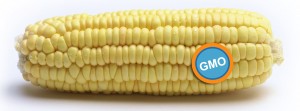05
Jun
Connecticut Challenges States to Label GE Food
(Beyond Pesticides, June 5, 2013) Connecticut passed a bill on Monday that requires food manufacturers to label products that contain genetically engineered (GE) ingredient, but only if other states do the same. This means people in Connecticut and other parts of the country will still have to wait to see GE labeling on their food.
On Monday, the state House of Representatives passed an amended version of a labeling bill that the state Senate approved two weeks ago, and Gov. Dannel Malloy has said he will sign it. House Bill 6527 — An Act Concerning Genetically-Engineered Food, will require producers to label genetically engineered food in Connecticut. The bipartisan bill passed unanimously in the Senate and 134-to-3 in the House. The bill will go into effect when, “Four states, not including this state, enact a mandatory labeling law for genetically-engineered foods that is consistent with the provisions of this subsection, provided one such state borders Connecticut; and (2) the aggregate population of such states located in the northeast region of the United States that have enacted a mandatory labeling law for genetically-engineered foods that is consistent with this subsection exceed twenty million based on 2010 census figures.”
Connecticut will now become the first state in the country that requires the labeling of GE organisms. However, the final version of the Connecticut bill includes quite a crucial catch or trigger clause: the labeling requirement would not actually go into effect until similar legislation is passed by other states in the New England region (including one state bordering Connecticut) with an aggregate population of 20 million.
“This bill strikes an important balance by ensuring the consumers’ right to know what is in their food while shielding our small businesses from liability that could leave them at a competitive disadvantage,” Gov. Malloy said in a statement issued over the weekend after negotiations on the necessary provisions.
According to the Connecticut Post, the “trigger clause” is meant to allay fears that Connecticut could suffer negative economic impacts by going it alone -higher food prices and lawsuits from major food companies. Lawmakers are counting on safety in numbers, and hoping their state’s precedent will encourage others to follow suit. “Somebody has to go first and say it’s OK to do it with some kind of trigger,” Senate Minority Leader John McKinney (R-Fairfield) said. “This gives great momentum for advocates in Pennsylvania and New York, for example, for [GE] labeling, because if they’re successful in New York we’ll probably see it along the entire East Coast.”
Andrew Kimbrell, executive director of the Center for Food Safety (CFS), called Connecticut’s move an “important first step,” and “a reminder of where the tide is going on this issue.” Mr. Kimbrell goes on to state that, “While Connecticut has set the stage for wide-ranging action on GE food labeling, it is not a perfect bill. CFS opposes the late addition of the trigger clause, which unnecessarily puts on hold what consumers and lawmakers have already validated as important legislation.” The Connecticut legislation was adopted from language written by CFS attorneys, and state legislators incorporated many changes proposed by CFS.
The New York Times notes that more than 20 other states are considering labeling laws, including New York, Maine and Vermont. Early polling suggests widespread support for a ballot initiative that would require labeling in Washington, as concern spread about the impact of GE salmon and apples on two of the state’s marquee businesses. In 2005, Alaska passed a law requiring the labeling of all GE fish and shellfish, but Connecticut would become the first state to adopt labeling broadly. Additionally sixty-four nations including China, South Africa, and all countries in the European Union currently require GE foods to be labeled. Representative Peter DeFazio (D-OR) and Senator Barbara Boxer (D-CA) recently introduced federal legislation that would require nationwide labeling of GE products.
The bill’s success is certainly an important victory for the GE-labeling movement, which seems to have been motivated, not discouraged, by last year’s unsuccessful but close vote on Proposition 37 in California. Industry giants like Monsanto and Dow spent tens of millions of dollars to help defeat the ballot measure in California that would have required labeling. Supporters of Prop 37 are regrouping, focusing on the 4.2 million Californians that voted yes and building a grassroots movement with 10,000 volunteers.
In the meantime, the best way to avoid food with GE ingredients is to buy organic. Under organic certification standards, GE organisms and their byproducts are prohibited. For many other reasons, organic products are the right choice for consumers.
Join the Just Label It campaign. The JUST LABEL IT: We Have the Right to Know campaign is dedicated to the mandatory labeling of genetically engineered (GE) foods, also referred to as genetically modified, or GMOs. The JUST LABEL IT message is simple: consumers have a right to know what is in our food so we can make informed choices about what we eat and feed our families.
Watch the video from the Genetically Engineered Food Workshop at Beyond Pesticides’ 31st National Pesticide Forum at the University of New Mexico for a discussion on federal and local GE labeling efforts, including strategies to move forward. The video features Andrew Kimbrell, Eleanor Bravo of Food and Water Watch—NM, who helped with New Mexico’s labeling bill, and Isaura Andaluz, executive director of Cuatro Puertas and member of a federal panel on GE food issues (AC21, the Advisory Committee on Biotechnology and 21st Century Agriculture). Additional videos from the forum, including keynote speeches, panel discussions, and other workshops, are available on Beyond Pesticides’ YouTube channel.
For more information, visit Beyond Pesticides’ Genetic Engineering and Organic pages.
All unattributed positions and opinions in this piece are those of Beyond Pesticides.
Sources: NYTimes, Center for Food Safety










